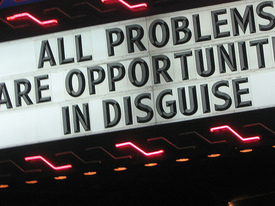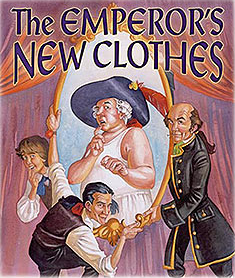Does the idea of a weak economy scare you? It shouldn’t! (J. Munk)
June 20, 2008
 Drew’s Note: As I try to do every Friday, I’m pleased to bring you a guest post from yet another interesting thought leader who shares his insights via the blogosphere. Enjoy!
Drew’s Note: As I try to do every Friday, I’m pleased to bring you a guest post from yet another interesting thought leader who shares his insights via the blogosphere. Enjoy!
Does the idea of a weak economy scare you? It shouldn’t
We’ve been hearing it now for months: The economy is weak. The Dollar is weak. Business is suffering. It’s all very apocalyptic, and for marketers, you might think it’s a scary time. After all, you have revenue to bring in and customers to keep coming back.
But here’s why a struggling economy should excite rather than scare you:
1. Customers are shopping around more than ever. When people are more price-sensitive, they compare costs and levels of service between companies more often, which means customers that may previously been out of reach to you might be looking your way now. It’s a great time to acquire new customers.
2. The weak economy will weed out the weak companies. This is survival of the fittest! If you’re a strong company, it’s time to rejoice, because soon you’ll have less competition to worry about and more customers to gain. If you’re currently weaker than you want to be, now is a great time to begin making the changes you’ve been putting off to become a great company.
3. Customers are looking for companies to trust. Show you care about and are there for your customers in difficult times, and go out of your way to make sure their experiences are great. Do it well and they will be loyal to you for years to come. Now is the time to invest in your customers with solid CRM marketing.
4. Every change is an opportunity. This change happens to include challenges that can be easily foreseen, which is, in fact, great news for marketers. Now you can look at your organization holistically and understand more precisely how your actions might affect your business. What’s more, since the struggle is universal, you can glean great insights from everyone else who is working to deal with the situation.
There’s no denying that a struggling economy is difficult on everyone, but with that comes great marketing opportunities that can help you grow your customer base, increase the lifetime value of existing customers and stand out from competitors like never before. Take advantage of it!
Jonathan Munk owns a Lamborghini. Billionaire. Small business marketing expert. One of these describes Jonathan Munk (hint: it’s the last one). Jonathan has spent his career helping companies understand the importance of marketing and helping them solve problems related to their marketing efforts. He invites you to subscribe to his blog Manizesto.
Every Friday is "grab the mic" day. Want to grab the mic and be a guest blogger on Drew’s Marketing Minute? Shoot me an e-mail.
Flickr photo courtesy of Donna Grayson.
More







